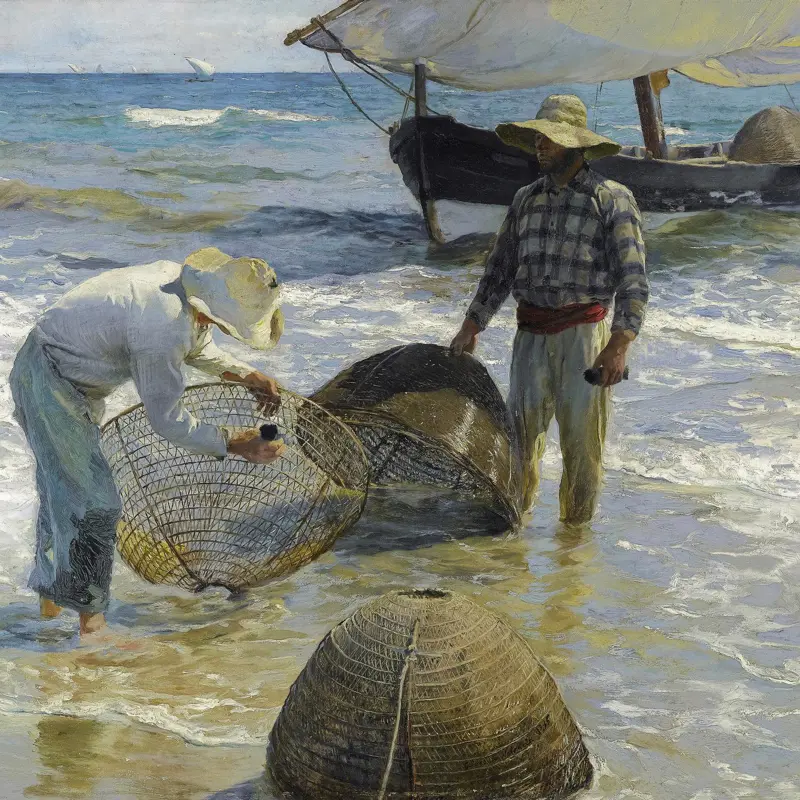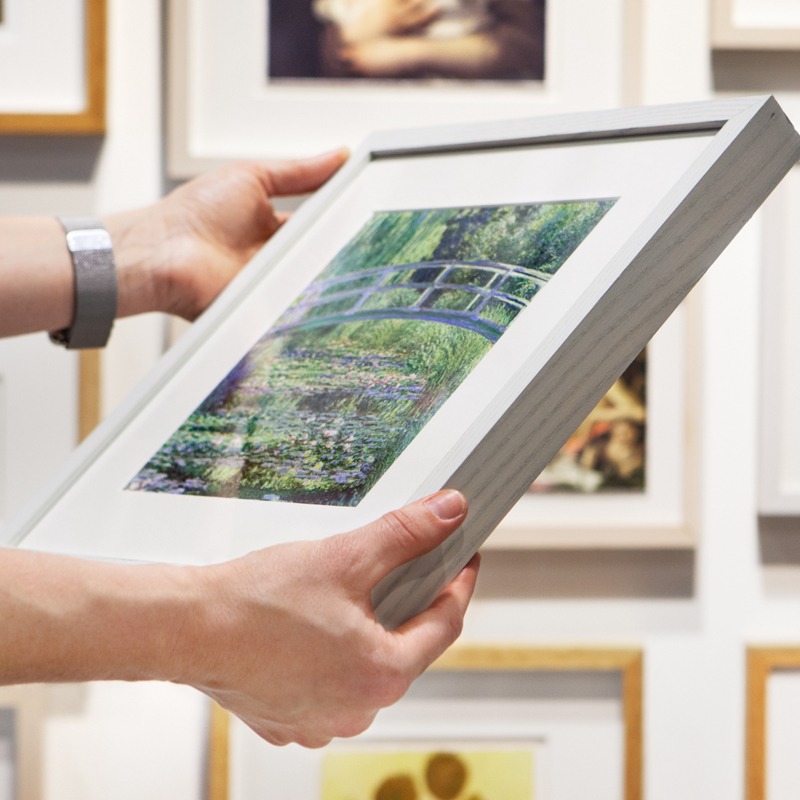Joaquín Sorolla, 'The Drunkard, Zarauz (El Borracho, Zarauz)', 1910
About the work
Overview
Five drinkers gather in a tavern in Zarauz, the Basque coastal town where Joaquín Sorolla spent the summer of 1910. One stares at the artist through watery eyes while another pushes cider towards him, egging on the inebriate to further excess. A third glances menacingly at the painter. The canvas edges cut off two further figures, as in an awkward amateur snapshot. This large-scale, improvisatory sketch is one of six tavern scenes Sorolla painted that summer.
It marks a turning point in his career as, for the first time in ten years, Sorolla depicted peasants in the sometimes harsh reality of their lives. He also returned to the distinctively Spanish blacks, greys and browns of Velázquez’s and Goya’s palettes, sparingly used for a decade. Here, Sorolla created one of his saddest works: a depiction of mockery, cruelty and addiction at the lower depths and a bravura exercise in compassionate observation.
Key facts
Details
- Full title
- The Drunkard, Zarauz (El Borracho, Zarauz)
- Artist
- Joaquín Sorolla
- Artist dates
- 1863 - 1923
- Date made
- 1910
- Medium and support
- oil on canvas
- Dimensions
- 115 × 140 cm
- Inscription summary
- signed; dated
- Acquisition credit
- Bought with the support of a generous legacy from David Leslie Medd, OBE, 2019
- Inventory number
- NG6683
- Location
- Room 45
- Collection
- Main Collection
- Frame
- 20th-century French Frame
Provenance
Additional information
Text extracted from the National Gallery’s Annual Report, ‘The National Gallery: Review of the Year, April 2019 – March 2020’.
Exhibition history
-
2019Sorolla: Spanish Master of LightThe National Gallery (London)18 March 2019 - 7 July 2019
Bibliography
-
2020National Gallery, The National Gallery: Review of the Year, April 2019 - March 2020, London 2020
About this record
If you know more about this work or have spotted an error, please contact us. Please note that exhibition histories are listed from 2009 onwards. Bibliographies may not be complete; more comprehensive information is available in the National Gallery Library.


